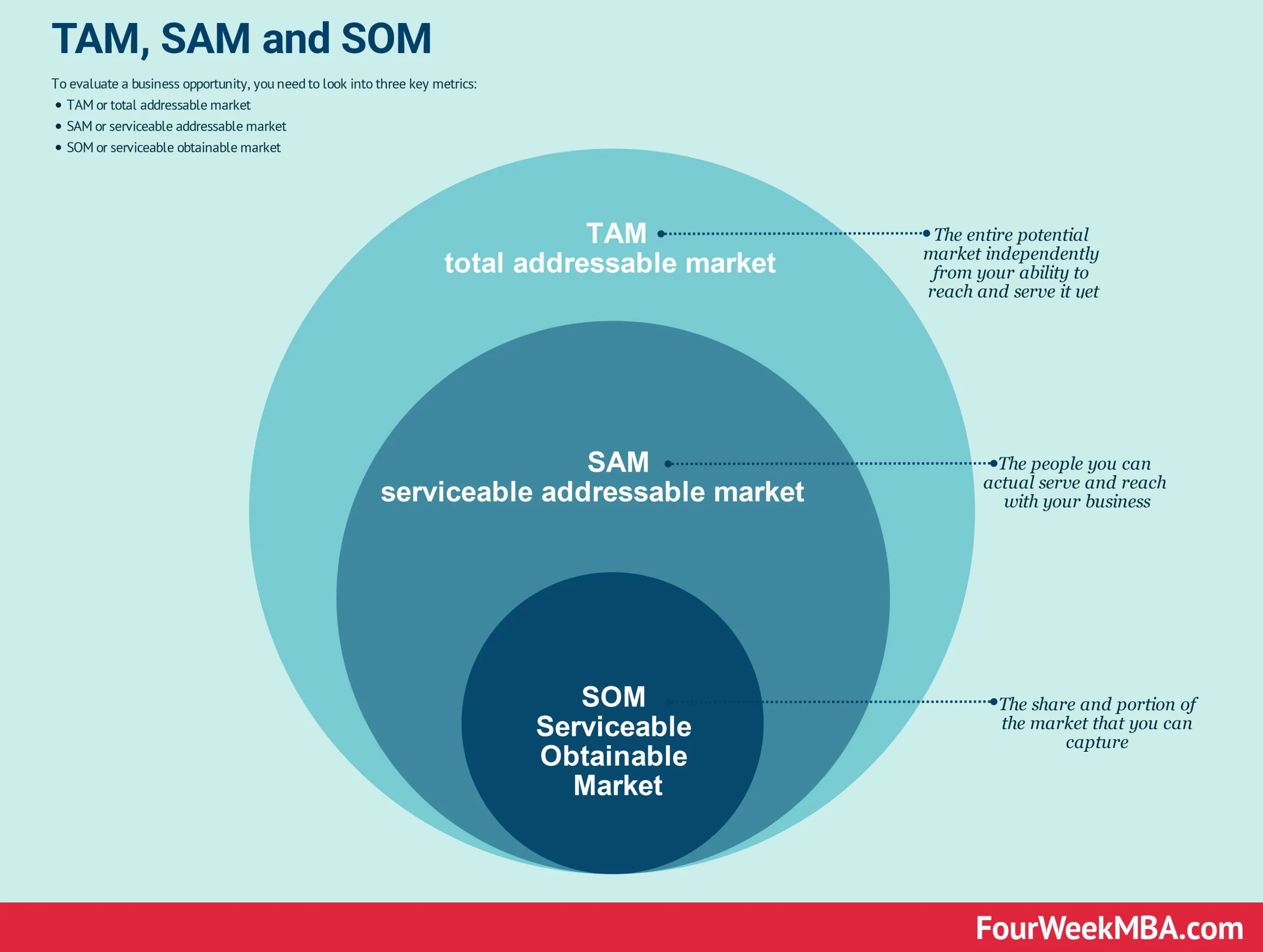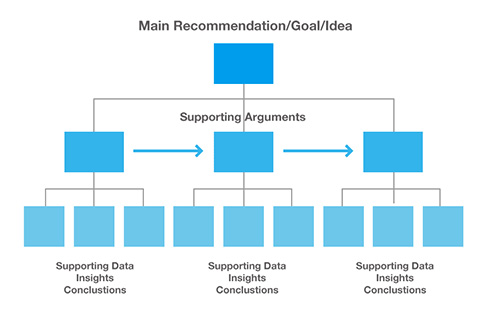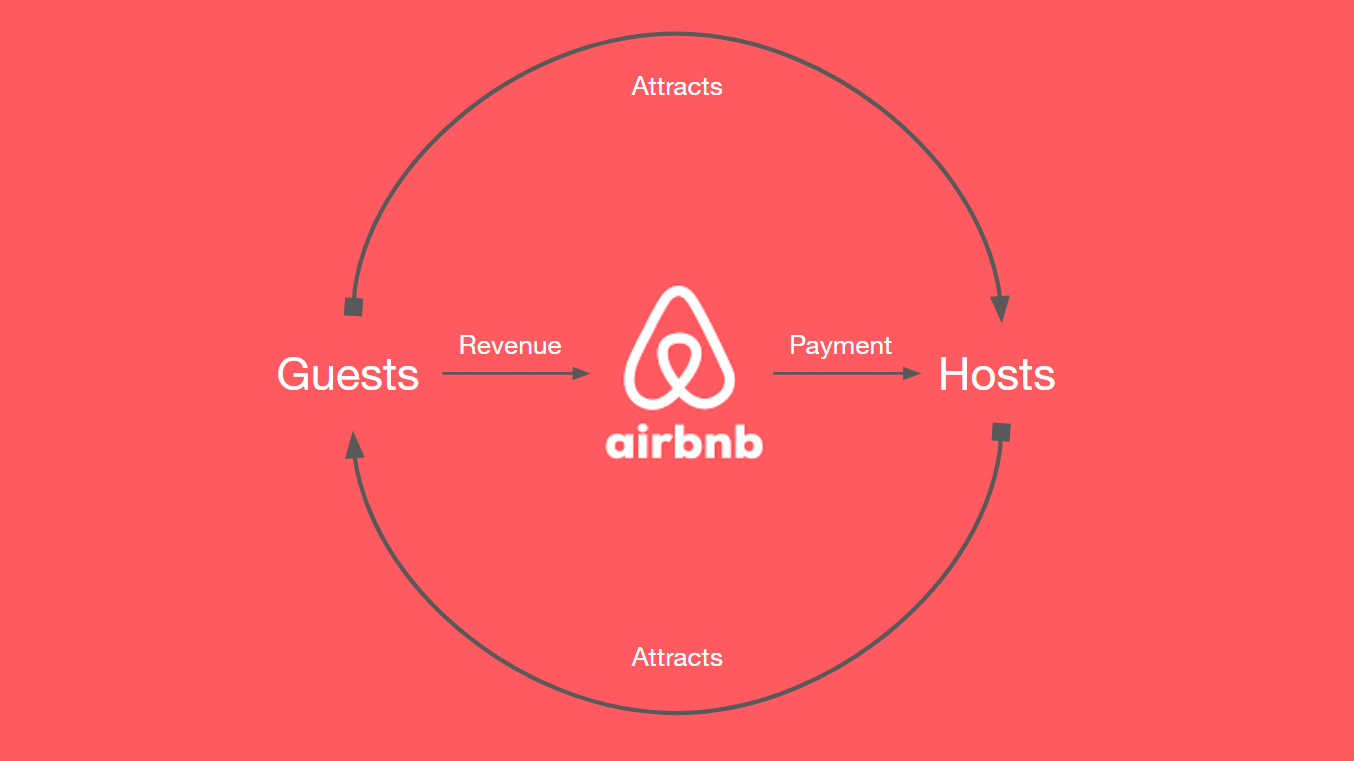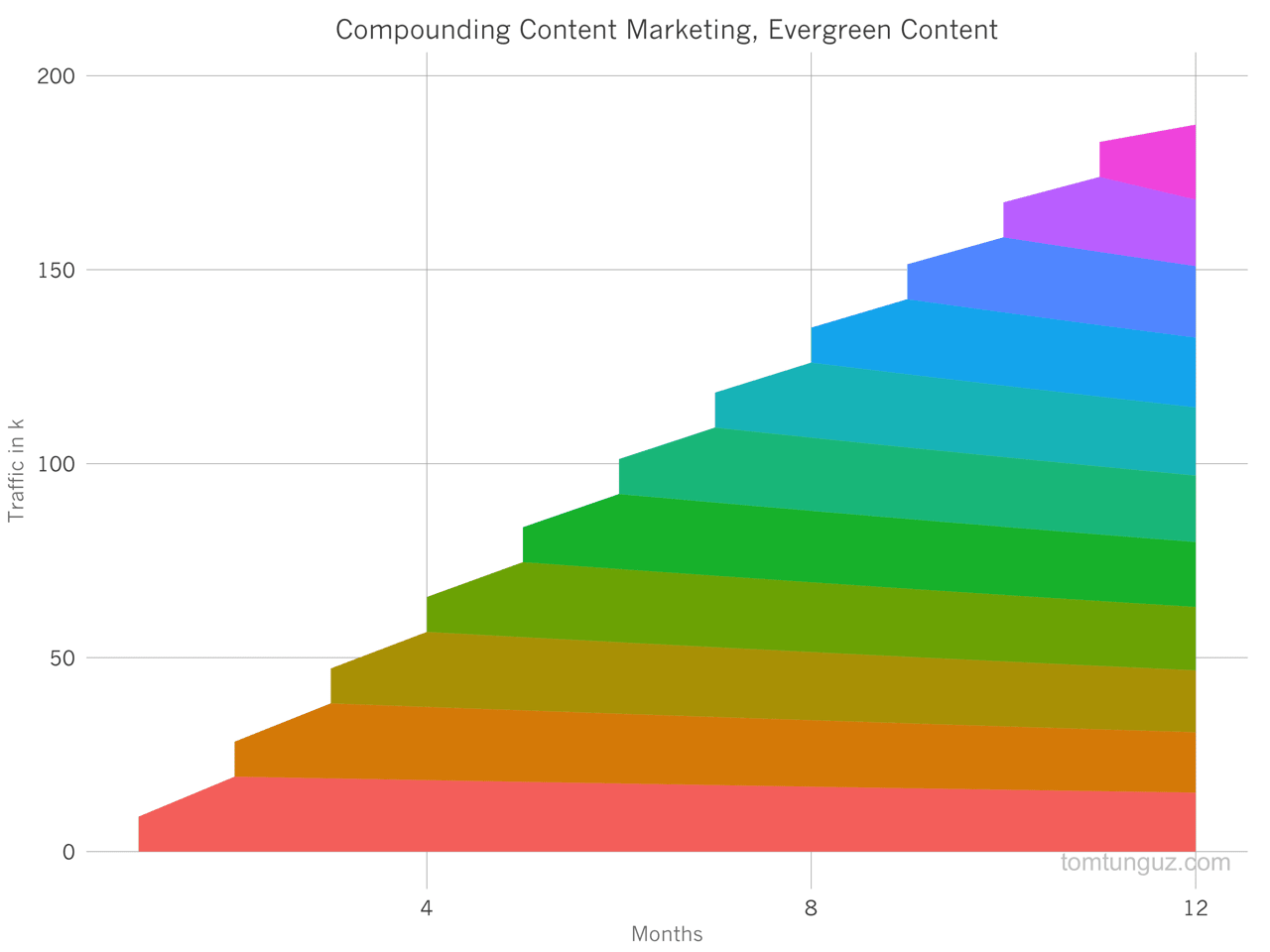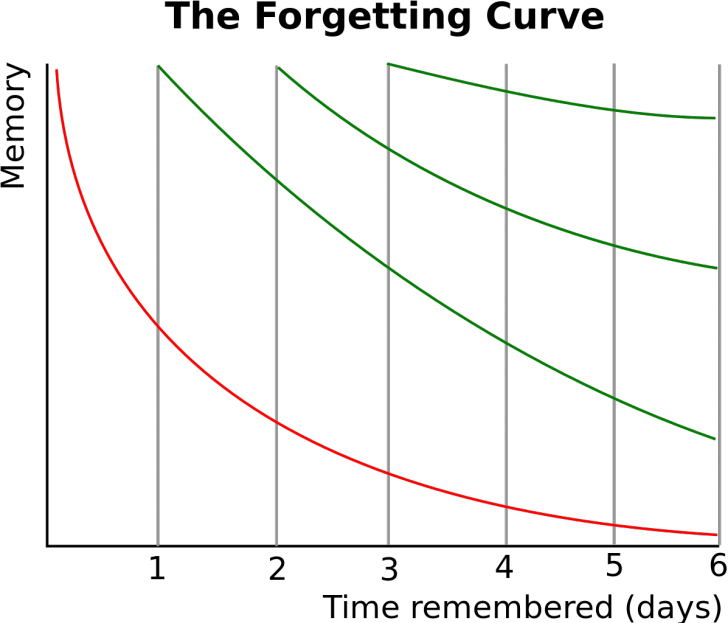One of the biggest challenges businesses face when they grow is scaling effective, autonomous and quick decision-making. What worked with 30 employees will start creaking at 300, and break well before you hit the 3,000-mark.
Good decision-making is extremely important. In fact, it has a compounding effect - the more good decisions a business makes, the better the results will be. So improving the quality, volume and speed of decision-making should be a priority - and done well, it can become a competitive advantage.
To help your employees make better decisions you should leverage mental models. The best companies double down on a small number of mental models and make these frameworks accessible to all employees, so everyone can make decisions through the same lens. The right mental models have a knack of becoming an integral part of a company’s operating system, and more importantly help employees make good decisions, more often. Google, Apple and HubSpot are just three examples of industry-leading companies which use mental models to aid quick decision-making.
Companies which don’t use mental models risk unleashing mayhem with poor choices or becoming bloated and bureaucratic by reducing the volume and speed at which decisions are made - both scenarios are undesirable and will impact growth.
The table below shows the impact of mental models on decision-making:
|
Decision-Making |
With Mental Models |
Without Mental Models |
|
Quality |
High/consistent |
Low/inconsistent |
|
Volume |
Large |
Small |
|
Speed |
Fast |
Slow |
What is a mental model?
Let’s back up a little and explain what a mental model is. There’s many definitions out there, but essentially, mental models are frameworks, principles and ideas which allow you to examine and solve problems in a systematic way and when applied correctly, help you think better. The right mental model is a shortcut to the right answer - they provide an edge.
I also often use James Clear’s definition of mental models, “Mental models help you understand life...Mental models also guide your perception and behaviour. They are the thinking tools that you use to understand life, make decisions, and solve problems. Learning a new mental model gives you a new way to see the world.”
The benefit of mental models
Mental models bring alignment, consistency, clarity and strategic thinking to decision-making, and best of all they empower employees to make decisions. What I also like about mental models is that they allow you to draw upon the experiences of others - the creator of the model has done all the testing, allowing you to make the right decision at the first time of asking.
When is the right time to use a mental model?
While some decisions are easy to make, mental models are particularly valuable when there’s a lot of seemingly good and acceptable ideas or options. Mental models bring rigour to decision-making. They also help you to focus and prioritise.
Charlie Munger of Berkshire Hathaway talks about using mental models in a “latticework of theory” - or put another way, leveraging lots of mental models simultaneously, “You can't really know anything if you just remember isolated facts and try and bang 'em back. If the facts don't hang together on a latticework of theory, you don't have them in usable form."
But here’s the thing - while mental models help critical thinking, they don’t replace it. The same is true of data - data informs decision-making, but doesn’t replace it. Also, simply sharing mental models at your company won’t truly empower employees to make better decisions - you need to foster a culture which rewards calculated risk-taking and “assumes best intent.” This means creating an environment where people feel safe to share learnings when the wrong decision is made, rather than shift blame. Admittedly, this is easier said than done and can take time, but just because something is difficult, doesn’t mean it shouldn’t be tackled.
52 Mental Models to Help You Grow
This post deliberately contains 52 mental models - enough to help you learn a new model each week for a whole year. That’s because the volume and variety of mental models you use is important - mental models help you identify patterns, so you can take ideas from one field and apply them to something completely different. David Cancel of Drift often talks about letting your ideas “cross-pollinate” and mental models can be a catalyst for that.
I leveraged many of the 52 mental models while working at various software as a service (SaaS) companies, but in truth, they can be applied anywhere, regardless of industry. A good idea is a good idea, after all.
The list below shows the different categories of mental model in this post (the links will take you to the relevant section):
Planning
1. MSPOT
An MSPOT is a simplified one page strategic plan used by HubSpot, and they have become an integral part of the company’s operating system. MSPOTs are a valuable tool for a number of reasons - they drive alignment and communicate in simple terms what can often be a complex area. In short, they make it easy to see what each team, department and organisation is working on, omitting and their respective goals.
MSPOT stands for:
Mission - rarely changes.
Strategy - annually changes.
Projects - four or five big annual initiatives.
Omissions - projects we decided not to fund.
Tracking - numbers we are looking at to see if we are on track
MSPOTs are a hugely effective tool and mental model - the clarity they give helps improve the volume and quality of decision-making.
2. OKRs
Objectives and key results (OKRs) is an effective framework for defining and tracking objectives and outcomes. OKRs were first developed by Andy Grove, former CEO of Intel, and they consist of a clearly defined goal (objective) and measures to track achievement of that goal (key results). OKRs are a useful mental model - they make it crystal clear what people and teams should be striving for.
3. DARCI Accountability Grid
The DARCI Accountability Grid is a framework which sets clear ownership and accountability, while empowering a person to be the decision-maker, so decisions can be made quickly. It helps work get done and is the antithesis of making decisions by committee.
DARCI stands for:
Decider - the ultimate decision-maker.
Accountable - person with decision-making authority who is held solely responsible for the project.
Responsible - the people responsible for completing the activities.
Consulted - people who are consulted about the project and asked for input.
Informed - people who are informed of the project’s progress.
I favour the DARCI Accountability Grid as it forces you to be thoughtful about communication, while enabling you to make decisions and move forward. It helps you move fast, but also has built-in checks and balances.
Prioritisation
4. Eisenhower Matrix
The Eisenhower Matrix is a 2X2 matrix and helps prioritise tasks by urgency and importance. What I like about the matrix is that it clearly and easily shows what will have the biggest impact. The Eisenhower Matrix speeds up decision-making and increases focus - it’s an effective tool to decide what work will get done. The image below shows an adapted Eisenhower Matrix that I use for sales enablement.
5. PIE Framework
Originally a tool for conversion rate optimization (CRO) work, the PIE Framework is a valuable way to prioritise what work you should tackle - it stands for potential, importance, and ease. You can apply the framework by answering the questions below with a score between 0-10:
How much total improvement can this project offer?
How valuable will this improvement be?
How complicated or difficult will it be to implement this improvement?
Once you've assigned a score for each project, add up the numbers and then divide it by three - this gives a score which shows what project will have the greatest impact.
6. Pareto Principle
The Pareto Principle (also known as the 80/20 Rule) states that 80% of the effects come from 20% of the causes. It is directionally true and best thought of as a rule of thumb, rather than law of nature. More important is how you apply the principle - by understanding that not all customers, programs and ideas are equal, you can prioritise and use resources strategically.
7. Weak-Leak and Strong-Link Thinking
The idea of weak-link and strong-link thinking was first popularised in The Numbers Game: Why Everything You Know About Soccer Is Wrong, a book written by Chris Anderson and David Sally. The basic premise is that you can adopt one of two approaches - you either help your weakest players (weak-link thinking) to improve or you focus on making your star players (strong-link thinking) even better. Ultimately, both schools of thought seek the same outcome (improve performance), but the approaches are wildly different.
8. Customer > Team > Individual
During my time at HubSpot, the leadership team shared this mental model to help with decision-making. It states that you should make decisions which benefit customers first, your team second, and yourself third. Again, it was an easy to use model which scaled effective decision-making.
9. Total Addressable Market
Total addressable market (TAM) is an economic framework to understand the potential revenue available for a product or service. By understanding the size of the TAM you can make more informed choices.
However, the concept of TAM (perhaps “total addressable anything” is more apt) can be applied to any scenario where there’s a potential audience to reach, such as countries, businesses or people. TAM is a valuable mental model to understand the size of an opportunity and subsequently, helps you prioritise activity.
Problem-Solving
10. Build a Moat
The idea of “building a moat” is a mental model from Berkshire Hathaway’s Warren Buffett. He is famed for saying, “In business I look for economic castles protected by unbreachable moats.” Just like in medieval times, moats are hard to breach and help preserve what you have.
Buffett has shared many times how he thinks about moats, “A good business is like a castle and you’ve got to think every day, is the management growing the size of the moat? Or is the moat shrinking?” In a world where product features and functionality are easily copied and commodified, moats will only grow in importance. Put simply, enduring companies have moats which defend their business model - they are a competitive advantage.
There are many examples of businesses with moats and they’re characterised as being difficult to replicate (which is why they’re desirable) - below are several examples:
|
Moat |
Company |
|
Brand equity |
Coca-Cola |
|
Content |
Disney |
|
Customer data |
|
|
Economies of scale |
Amazon |
|
Freemium lead funnel |
MailChimp |
|
Network effects (marketplace) |
Uber |
|
Operational efficiency |
Walmart |
|
Personalisation |
Spotify |
|
Subscription business model |
Costco |
|
User generated content |
|
11. Gall’s Law
Gall’s Law states that a complex system which works is invariably found to have evolved from a simple system that worked. The inverse also appears to be true - complex systems designed from scratch never work and cannot be made to work. You have to start with a simple working system. This model is a great reminder of the importance of simplicity - Intercom’s take on this approach is “start with a cupcake” and is well worth reading.
12. Minto Pyramid Principle
The Minto Pyramid Principle is a framework for writing and presenting ideas. Created by Barbara Minto during her time at McKinsey, she described the pyramid as, “A tool to help you find out what you think.” The Pyramid requires you to distil ideas that are “mutually exclusive of each other and collectively exhaustive”.
Source: McKinsey
13. Inversion
Inversion is when you turn a situation or problem upside down. Charlie Munger of Berkshire Hathaway is famed for using inversion as a way to look at problems differently. Munger uses inversion to create a list of how to fail, so he’s aware of what could go wrong. Inversion is best thought of as a mental model to help identify potential pitfalls. Using this information you can then make better decisions the first time around and avoid problems later on.
Innovation
14. Amazon Flywheel
The Amazon Flywheel was first described in Jim Collins’ book Good to Great: Why Some Companies Make the Leap...and Others Don't. Collins observed that some of Amazon’s initiatives created a virtuous circle and had a compounding effect on each other.
Amazon creates a flywheel (see image below) by leveraging economies of scale to lower its cost structure, which results in lower prices for customers. Lower prices means more people visit its website, which then attracts more sellers, resulting in even greater selection. All of these initiatives combine to create a superior customer experience and have helped Amazon become the behemoth it is today. Other leading companies with flywheel-type businesses are Google, Facebook and Walmart.
15. S Curves
At HubSpot we often discussed S Curves - the idea behind them is that all products, markets and business models follow a predictable cycle of growth, maturity and decline (the pattern often looks like an “S”). After a period of growth, maturation strikes as price competition emerges, the most attractive customers are acquired and businesses see diminishing returns.
To overcome this challenge, the best companies continually innovate and create new products to offset the maturation and decline of existing ones. The lesson here is to view your products in terms of S Curves and ensure you’re investing in your next greatest hit.
Source: Accenture
16. Horizons Framework
Another innovation model is the Horizons Framework developed by McKinsey. It offers a way to focus on short, mid and long-term growth opportunities, and the eagle-eyed among you will notice that (see chart below), visually, it shares some similarities with the S Curve diagram. The Horizons Framework is an effective way to categorise projects, which in turn helps with assigning budget, headcount and timelines.
Source: McKinsey
17. Jobs to be Done Theory
The Jobs to be Done Theory was developed by Clay Christiensen of Harvard Business School. The key tenet is to understand the real job customers are using or “hiring” your product for. Examples of jobs to be done include, people buying a hammer to hang a painting and famously, a milkshake for entertainment during their daily commute.
Jobs to be done is a simple, yet powerful theory and has shifted the way people think about products, innovation and more. Intercom has made it a core mental model of their business and regularly share how they apply it to product development.
18. Minimum Viable Product
I’m a big proponent of minimum viable products, or indeed minimum viable anything. Understanding what is the least amount of product, effort or resource required for something to be acceptable and useful is an extremely worthwhile exercise. This mental model helps teams focus on delivering results, rather than perfection.
19. Agile
Agile software development has been such a success that people now apply the “agile” moniker to a broad range of areas. While some agile purists lament this, I think it’s the highest compliment - people want to adapt and leverage an idea beyond its original usage.
Indeed, the key principles of agile are valuable regardless of context. Adaptive planning, evolutionary development, early delivery, and continual improvement, all while remaining flexible and responding to change are valuable approaches both inside and outside of the world of software development.
20. Feedback Loops
Whether you’re launching a new product, leading a team or evaluating an internal campaign, it’s important to establish effective feedback loops. Feedback truly is a gift and receiving feedback, providing it is leveraged correctly, enables you to iterate more often and more quickly, resulting in greater improvements. That’s true regardless of the setting.
Drift launches a new product every month - this cadence enables the company to get the product to users who provide feedback, which is then used to improve the product. Establishing feedback loops in this manner, that are quicker than the industry average can be a competitive advantage. It helps you move faster and deliver greater improvements in less time.
The idea of feedback loops, at scale, is interesting to me and we should all try and build into our workflow more opportunities to give and receive feedback. That’s how we’ll make greater improvements, more quickly.
21. Network Effects
A network effect is a term used in economics and business when each additional user of a good or service increases the value of that product to others. Or put another way, networks become more valuable as more nodes are added to the network. It can be a virtuous cycle.
Network effects is an important mental model, and we interact daily with many goods and services with strong network effects (and often virality built in) - telephones, social media and online marketplaces, to name a few.
Getting Work Done
22. Directly Responsible Individual
A management concept, originally championed by Apple, a directly responsible individual (DRI) is someone that is explicitly responsible for a program, task or process. By assigning a DRI you provide clarity, while also creating a level of transparency, accountability and ownership for work.
23. Have Backbone; Disagree and Commit
It’s both healthy and inevitable that you’ll have disagreements at work, but it’s important that employees have a way of moving on, while not feeling slighted. One of the Amazon Leadership Principles, “Have Backbone; Disagree and Commit” does just that. People are expected and encouraged to respectfully challenge decisions, but once a decision has been made they need to commit wholly. This mental model helps avoid Groupthink and consensus-building, while setting clear expectations about moving forward.
24. Extreme Ownership
The concept of “extreme ownership” has been popularised by Jocko Willink, a former Navy SEAL. Willink champions the idea that if you want autonomy and freedom you need to earn it by taking responsibility and showing discipline.
At first glance the idea that responsibility gives you autonomy or that discipline leads to freedom may seem an odd dichotomy. But let it sink in for a moment. If you want autonomy you need to be able to show complete and total ownership of work, which means being responsible for it - both its success and failure. And you also need discipline - you need to be consistent, reliable and of course, see work through to completion. Responsibility is to autonomy as discipline is to freedom.
25. Forcing Function
I’m a big advocate of forcing functions - essentially, they are a task, activity or event that forces you to take action and produce a result. Forcing functions, such as setting a date, sharing a goal publicly or creating an event are a great way to ensure that work gets completed. They protect against bureaucracy, procrastination and Parkinson’s Law which states that, “Work expands so as to fill the time available for its completion.”
26. Repeatable Systems
If you do something more than once, it’s a repeatable system and you should create a checklist for it. Building checklists drive consistency, make program management easier and save resources - you don’t need to invent the wheel each time you complete the process. Repeatable systems are efficient, consistent and help you scale.
27. Invent and Simplify
This mental model is also part of the Amazon Leadership Principles. What I like about it is the clarity - all teams everywhere should be creating value by inventing new things or simplifying existing ones. Some teams are naturally more adept at inventing or simplifying, but both are extremely important. Inventing is to innovation as simplicity is to operational excellence.
28. Get Shit Done
One of the biggest lessons I learnt at HubSpot was the importance of hiring people that have a bias for action and “get shit done” (GSD). Filling the company with smart, hungry and passionate people with a high GSD quotient is a key part of their operating system. It also sets the right tone - delivering consistently great work is more important than seeking occasional perfect work.
I don’t strive for perfection - I’d rather GSD and launch something that is 80% or 90% ready and iterate, rather than wait until reaching 100% perfection. The obvious thing about striving for perfection is that it’s hard to achieve, but what’s less apparent is the diminishing returns you’ll see by focussing too much time on taking something from great to perfect.
29. Seek Feedback, Not Consensus
This mental model is part of Drift’s Leadership Principles. At large meetings there’s a tendency for people to build consensus, rather seek feedback. This is always wrong. Consensus building rarely leads to the best ideas - in fact, they regress to the mean. And average ideas lead to average speed and ultimately, average results. Once again this mental model helps guard against Groupthink.
30. Amazon Narratives (Six Page Memos)
Amazon Narratives are another excellent mental model and an important way that work gets done at Amazon. At the start of meetings Amazon executives read six page memos, instead of enduring a PowerPoint presentation. Crafting six page memos forces people to think more deeply about a topic, rather than hiding behind bullet points and images. Amazon Narratives help create stronger ideas more quickly and are a better use of attendee’s time.
31. Minimize Unforced Errors
An “unforced error” is a term used in tennis when a player makes a mistake, such as a failed service or shot. This term is in contrast to a “forced error”, which is caused by an opponent’s good play.
The unforced error analogy can be applied outside of sport - they are caused by mistakes, carelessness or poor judgement, and while they can be fatal to a business and presidential campaigns, most often they damage trust and credibility. Reducing unforced errors is an important step to achieving operational excellence, but when they do occur it’s important to learn from them.
32. Power is Gained by Sharing Knowledge, Not Hoarding It
Another mental model I learnt at HubSpot is the importance of sharing knowledge, not hoarding it. Unfortunately, all too often people can be reluctant to share knowledge and expertise as they may not get the credit or recognition, they feel that they deserve. This perspective is outdated and I would go as far as say, that you don’t want persistent knowledge hoarders at your business. They damage their colleague’s growth opportunities.
As more people become knowledge workers, the importance of openly and collaboratively sharing knowledge will continue to grow. The more this happens, the more opportunities there will be for growth and new ideas. The value of this kind of culture is hard to quantify, but it’s another vital part of HubSpot’s operating system. Sharing knowledge and ideas demonstrates true leadership and confidence.
33. The Two Pizza Rule
Amazon CEO, Jeff Bezos is well-known for culling unnecessary meetings, but when they are called they need to obey the “two pizza rule.” The premise of the two pizza rule is easy to remember (like all great mental models) - never have a meeting where two pizzas couldn't feed the entire group. This forces people to be thoughtful about invitations and avoids having meetings which score high on attendance, but low on outcomes.
Growth
34. The Circle of Competence
Warren Buffet and Charlie Munger developed the Circle of Competence to help guide their investment decisions at Berkshire Hathaway. The basic premise is that you should concentrate on areas where you have expertise and knowledge, and minimise those where you have limited understanding or experience.
Buffett summarised the concept in the motto, "Know your circle of competence, and stick within it. The size of that circle is not very important; knowing its boundaries, however, is vital.” It’s a valuable mental model which can be applied way beyond the world of investing.
35. T-shaped Employees
I’m a big believer in the importance of hiring and developing T-shaped employees - these people possess deep expertise in a specific area, but are also knowledgeable and skilled in other areas. They have breadth and depth - essential for disciplines like marketing where the tactics and strategies are constantly evolving.
36. Double Down on Strengths
In Peter Drucker’s timeless classic, Managing Oneself he shared many valuable insights to get - and stay ahead at work. One of the key learnings is recognising that it takes far more energy and work to go from incompetent to mediocre than it does from from first-rate to excellent. Drucker recommends concentrating on your strengths and putting yourself where these strengths will produce the best results.
37. Marginal Gains
I’m a big advocate of the marginal gains philosophy and the idea that many small improvements can make a big difference, as well as how improving in several areas at the same time can have a multiplier effect. Marginal gains was developed by Sir Dave Brailsford, Head of British Cycling - he recognised that if the team broke down everything they could think of that goes into competing on a bike, and then improved each element by 1%, they would achieve a significant aggregated increase in performance.
The (entirely theoretical) calculations below shows how marginal gains of 1% performance each day for a year creates a dramatic improvement of nearly 40%, whereas a 1% decrease in performance leads to near enough zero:
1.01^365 = 37.8
0.99^365 = 0.03
Marginal gains is often the best approach when you’re working with a high performing or well optimised team. Financial services, healthcare and elite sport are just three examples of where small margins can have a big impact on results. I like the concept of 10X thinking, but frankly, it works best in rapidly growing, “blue ocean” industries, whereas marginal gains is more applicable to established, and efficient “red ocean” industries. Marginal gains is more evolution, rather than revolution.
38. Stress + Rest = Growth
Brad Stulberg, is a former McKinsey consultant and author of Peak Performance. Stulberg leveraged his background in consulting, healthcare and “human performance” to create a framework for growth across any discipline. His key idea is that to grow you must do two things:
You need to challenge yourself, and push yourself. You need to feel the burn.
You need to relax and give yourself time to recover.
Stulberg has come up with a formula to describe his approach: Stress + Rest = Growth. The premise is simple - whether you’re lifting weights or tackling a new project at work, if you push yourself hard and feel the burn (or stress), and then have adequate recovery time, mentally or physically, you’ll grow.
39. Regret Minimisation
When making important decisions, a valuable lens in which to view the decision is regret minimisation. This mental model is straightforward, yet powerful - you should consider choosing the option you’ll regret having not done when looking back at the end of your career. Regret minimisation is not always the right approach, but it offers an important perspective and can be the spark to try something new.
Economics
40. Compound Interest
Compound interest is the addition of interest to the principal sum of a loan or deposit - or put another way the interest on interest. Content marketing is often cited as a strategy which has a compounding effect (see image below). Organisations which invest in content, continue to see results long after the content is published, whereas tactics like Google AdWords stop producing results as soon as they’re paused.
While saving and financial literacy is important, the lesson here is to understand how compound interest works and be able to identify activities that have a compounding effect.
41. Opportunity Cost
Too often people think solely in terms of the up-front cost of a program, service or product. They’re not thinking about the opportunity cost - the value they’ll lose by not selecting a particular option.
For example, a sales engagement tool could be much cheaper than its competitor, but lacks key functionality and takes more time to use. The tool may save money, but it’ll create less value in the long-term. It can be hard to paint an accurate picture of what the increased value of a decision may be - but if you fail to consider the opportunity cost, you risk making decisions based on cost, rather than value.
42. Diminishing Returns
In economics, diminishing returns is the point at which the level of profit or benefit gained is less than the amount of money or energy invested. An example of diminishing returns is Google’s hiring process - the technology giant discovered that four interviews was enough to predict whether someone should be hired with 86% confidence. Having a fifth interview only provided an incremental benefit, yet increased costs (time) by a further 25%.
Eventually, everything reaches the point of diminishing returns, as you eek out smaller and smaller improvements. It’s important to understand this model, as it helps you recognise when is the right moment to pause, modify or cancel an activity.
43. Bullwhip Effect
The idea behind the Bullwhip Effect is that small changes in retail demand amplify into big swings up the supply chain. The Bullwhip Effect demonstrates that even minute changes in retail demand create a whip-like effect upstream.
The image below shows the Bullwhip Effect applied to brewing - the brewer’s orders whipsaw up and down as the retailer and distributor over-order and then under-order. This mental model can be applied to any areas where there’s a supply chain.
Psychology
44. Start with “Why”
Simon Sinek’s seminal TED talk How Great Leaders Inspire Action encouraged people to understand and start with “why?” Sinek says people are inspired by a sense of purpose (the "why"), and this should come first when communicating, before moving on to explain the "how" and "what".
Sinek has created what he calls the “Golden Circle” with "why" representing people's motives or purposes, "how" representing people's processes or methods and "what" representing results or outcomes. It’s an important communication lesson and valuable way to align tactical work with a greater vision.
Source: Smart Insights
45. Loss Aversion
Loss aversion refers to people’s conservation instincts - we prefer avoiding losses to acquiring equivalent gains. For example, most people think it’s better to not lose £5 than it is to gain £5. You should consider this mental model when motivating a group - people instinctively want to preserve what they have. Studies have shown that losses are twice as powerful, psychologically as gains - this explains why people tend to focus on and recall negative, rather than positive experiences.
46. Nudge Theory
Nudge Theory is a type of behavioural economics which uses positive reinforcement and indirect suggestions to influence behaviour and decision-making. Nudge: Improving Decisions About Health, Wealth, and Happiness brought the theory worldwide attention back in 2008. While hype surrounding the book has receded, the guiding principle remains - sensible “choice architecture” can successfully nudge people toward the best decisions (although “best” is clearly subjective).
There are many varied and interesting ways that nudges have been used to influence behaviour, including "nudging” people to pay car tax and court fines, as well as for more dubious outcomes, such as buying “supersize meals” or products with higher profit margin.
47. The Compromise Effect
The Compromise Effect states that people are more likely to choose the middle option of a selection, rather than the extreme options. This mental model is important when making suggestions and recommendations - people instinctively want to avoid the riskier choice. If you optimise the middle option, you can then leverage the Compromise Effect and “nudge” people towards it.
48. Social Proof
The term “social proof” was first coined by Robert Cialdini in his book Influence: The Psychology of Persuasion - essentially, social proof is when people copy the actions of others. Cialdini found that influence is based on six key principles: reciprocity, commitment and consistency, social proof, authority, liking and scarcity. If somebody is unsure of the correct way to behave it stands to reason they’d want to leverage social proof and look to others for clues and reassurance on the right behaviour.
The Edelman Trust Barometer has consistently supported the idea of social proof - over the past 14 years a “person like yourself” has been the second most trusted source of information, behind only academics.
49. Gamification
Gamification is the application of game-design principles in non-game contexts. Gamification makes ordinary activities more fun and engaging by rewarding people - examples include recognisable cues to guide action, instantaneous feedback and leaderboards. When successfully applied to training, gamification increases engagement, productivity and knowledge retention.
Learning
50. Forgetting Curve
The Forgetting Curve shows how information is lost over time without reinforcement and repetition. The theory developed by Hermann Ebbinghaus in 1885 states that humans start losing the memory of learned knowledge over time, in a matter of days or weeks, unless the learned knowledge is consciously reviewed time and again.
The Forgetting Curve has huge implications for learning - without reinforcement the knowledge will not be retained. Indeed, 90% of learning is lost within a week of training.
Source: Psychestudy
51. The 70:20:10 Model for Learning and Development
The 70:20:10 Model for Learning and Development is a model with a proportional breakdown of how people learn effectively. The model shows that people obtain 70% of their knowledge from on-the-job experiences, 20% from interactions with others and 10% from formal training.
This model shows the importance of different types of learning and helps to quantify the learning which takes place outside of a formal environment. Like most models, the ratios are not set in stone - instead, they offer a starting point.
52. Pomodoro Technique
The Pomodoro Technique is a time management technique developed by Francesco Cirillo. The technique uses a timer to break down work into intervals, traditionally 25 minutes in length, separated by short breaks. These intervals are referred to as “pomodoros” - and after four pomodoros, you take a longer break for 15-20 minutes.
While the technique sounds basic, it taps into other mental models which contributes to its effectiveness - the technique is gamified (a break is your reward), helps you overcome Parkinson’s Law and manage distractions.
Most people make decisions based on a combination of data and gut instinct, but mental models are an additional tool to help guide the decision-making process. Once you open your mind to the possibilities of mental models, the difference, quite simply, is like night and day. They’re an invaluable part of your decision-making toolkit.
If you’re interested in outsmarting the competition by scaling effective, autonomous and quick decision-making at your business, then you need to study mental models. The time to act was yesterday.



